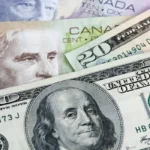On Thursday gold for delivery in June traded within the range of $1,264.00-$1,281.20. Futures closed at $1,267.95, losing 0.52% compared to Wednesday’s close. It has been the 35th drop in the past 72 trading days. The daily high has been the highest price level since May 9th, when a high of $1,286.50 was recorded. The precious metal has dropped 1.05% so far during the current month, following four consecutive months of advance.
On the Comex division of the New York Mercantile Exchange, gold futures for delivery in June were up 0.58% on Friday to trade at $1,275.25 per troy ounce. The precious metal went up as high as $1,277.05 during early European trade, while the current daily low was at $1,264.00 per troy ounce, recorded during early Asian session.
The US Dollar Index, a gauge reflecting the relative strength of the greenback against a basket of 6 other major currencies, was edging up 0.23% on the day at a level of 94.33, after reaching 94.41 earlier, or the highest level since April 28th. Yesterday the index advanced 0.34% on the day to close at 94.11. Stronger dollar usually pressures demand for gold and other dollar-denominated commodities, as they tend to become more expensive to holders of other currencies.
Today gold trading may be strongly influenced by the monthly report on US retail sales. The respective index probably rebounded in April, going up at a monthly rate of 0.8%, according to the median forecast by experts. If so, this would be the sharpest monthly increase since July 2015. In March sales at retailers in the country went down 0.3%. US core retail sales, or retail sales ex autos, probably increased 0.5% in April compared to a month ago, following a 0.2% gain in March. If so, April’s rate of increase in core sales would be the fastest since July 2015, when a revised up 0.6% surge was reported. A larger-than-expected rate of increase in the general index would have a strong bullish effect on the US dollar and a strong bearish effect on gold. The official report is due out at 12:30 GMT.
Additionally, the monthly survey by Thomson Reuters and the University of Michigan may show that consumer confidence in the United States rebounded in May. The preliminary reading of the US Consumer Sentiment Index, which usually comes out two weeks ahead of the final data, probably rose to a level of 91.0 during the current month from a final reading of 89.0 in April. The latter came below the preliminary reading of 89.7, which was reported on April 15th. It has been the lowest index reading since September 2015, when a final 87.2 was reported. In case the gauge of consumer sentiment increased at a steeper pace than projected in May, this would have a moderate-to-strong bullish effect on the US dollar and a moderate-to-strong bearish effect on gold. The preliminary reading is due out at 14:00 GMT.
Market players will also be paying a close attention to the remarks by the Federal Reserve President for San Francisco and also a FOMC member, John Williams, who is expected to speak at 22:25 GMT.
Meanwhile, silver futures for delivery in July were up 0.35% on the day to trade at $17.150 per troy ounce, after going up as high as $17.200 a troy ounce during the early phase of the European trading session. Yesterday the commodity came off highs unseen since May 6th to close at $17.090 per troy ounce, retreating 1.32% on the day.
Daily and Weekly Pivot Levels
By employing the traditional calculation method, the daily pivot levels for gold are presented as follows:
Central Pivot Point – $1,271.05
R1 – $1,278.10
R2 – $1,288.25
R3 – $1,295.30
S1 – $1,260.90
S2 – $1,253.85
S3 – $1,243.70
By using the traditional method of calculation again, the weekly pivot levels for gold are presented as follows:
Central Pivot Point – $1,289.37
R1 – $1,307.93
R2 – $1,322.97
R3 – $1,341.53
S1 – $1,274.33
S2 – $1,255.77
S3 – $1,240.73





